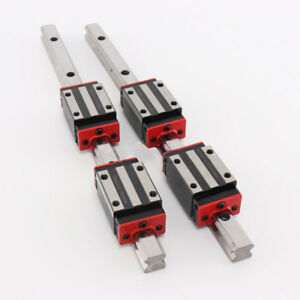Today’s precision rails differ in size, weight, and overall aesthetic. Although this offers a wide range of options for mounting, choosing the best precision rails to enhance the performance and look of your piece, can be quite tricky.
For some, the decision falls down to personal preference and how they feel about a medley of factors such as cost, ease of installation, length, and weight.
Outlined in this article are the most common aero precision rails available and its benefits. Make sure to read each one carefully to pick the appropriate rail system and avoid losing money.
Dovetail Rail Systems
With excellent stiffness and sufficient load capacities, dovetail rails offer added precision when shooting. Its sliding surfaces also exhibit a full-contact texture, which makes it suitable for damping and absorbing vibrations and shocks, which helps in reducing the risk of damage in roller bearings.
Interestingly enough, dovetail slides are also capable of withstanding numerous loads for any direction. By the same token, dovetails are also self-aligning, self-locking, and self-squaring, which enables it to deliver quality performance in different locations.
Read, TYPES OF DRONE CAMERAS USED IN AERIAL PHOTOGRAPHY
It also comes in two specific designs which include the thinner low-profile version and thicker high-profile versions which provide increased stiffness against deflection.
Warsaw Pact Rail Systems
The Warsaw Pact Rail system is a Soviet variant of the dovetail rail. Unlike the typical dovetail rail system; this Russian-made precision rail links telescopic sights on the left side of the rifle’s receiver.
It is mostly found on some contemporary weapons which are used for sport shooting and hunting as well as on light recoiling air guns.
Popular rifles that adopt a side-mounted scope rail include the PSL rifle, Dragunov sniper rifle, and some AK assault guns that were made from 1954 onwards.
Weaver Rail Systems
Dissimilar to dovetail rails, a weaver precision rail makes use of a pair of parallel tracks to connect telescopic sights to crossbows, pistols, rifles, and guns.
Old weaver rails have two pieces mounted a distance apart from one another. While it comes cheap, this setup often harms the scope, the barrel, and the parallels of the rifle.
For desirable results, opt for modern weaver rail systems which are decked with a one-mounted piece. This one-piece approach ensures that the rail system stays congruent in alignment and won’t cause bottlenecks due to receiver length or metal thickness.
Picatinny Rail Systems
Pic rails, one of the most durable aero precision rails, are a military-standard rail interface system that is capable of attaching accessories such as tactical lights, laser aiming modules, night vision devices, and iron sights among others.
It is typically utilized for fastening scopes on top of the receivers of high-caliber rifles. Besides, it also exhibits a hexagonal-cross design with crosswise slots, which makes it easier to slid accessories in place from the start to the end of the rail.
Unlike the weaver rail system, Picatinny comes with a more pronounced angular look that makes it perfect to use on the upper surfaces and lower sides of all weapons.
Also Read, TOP 5 REASONS TO EXHIBIT YOUR BRAND AT TRADE SHOWS

Leave a Reply